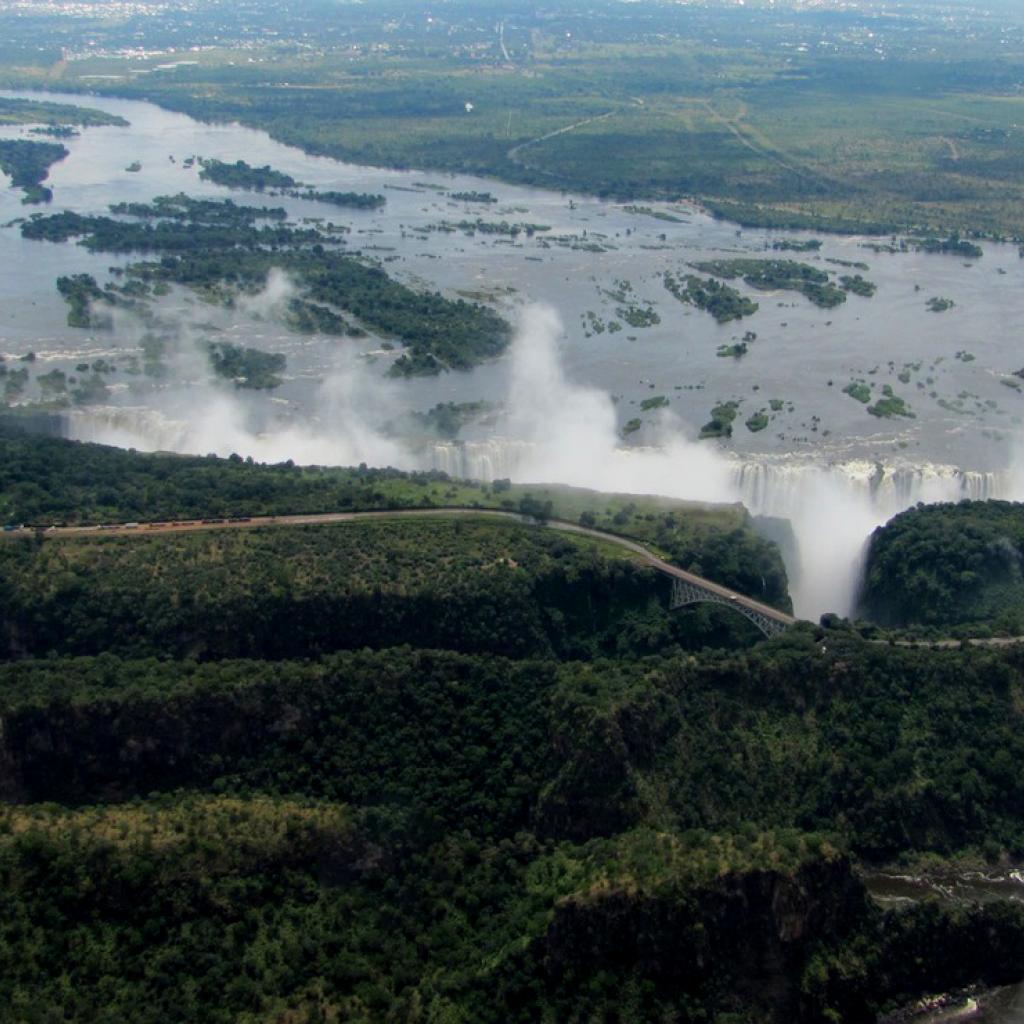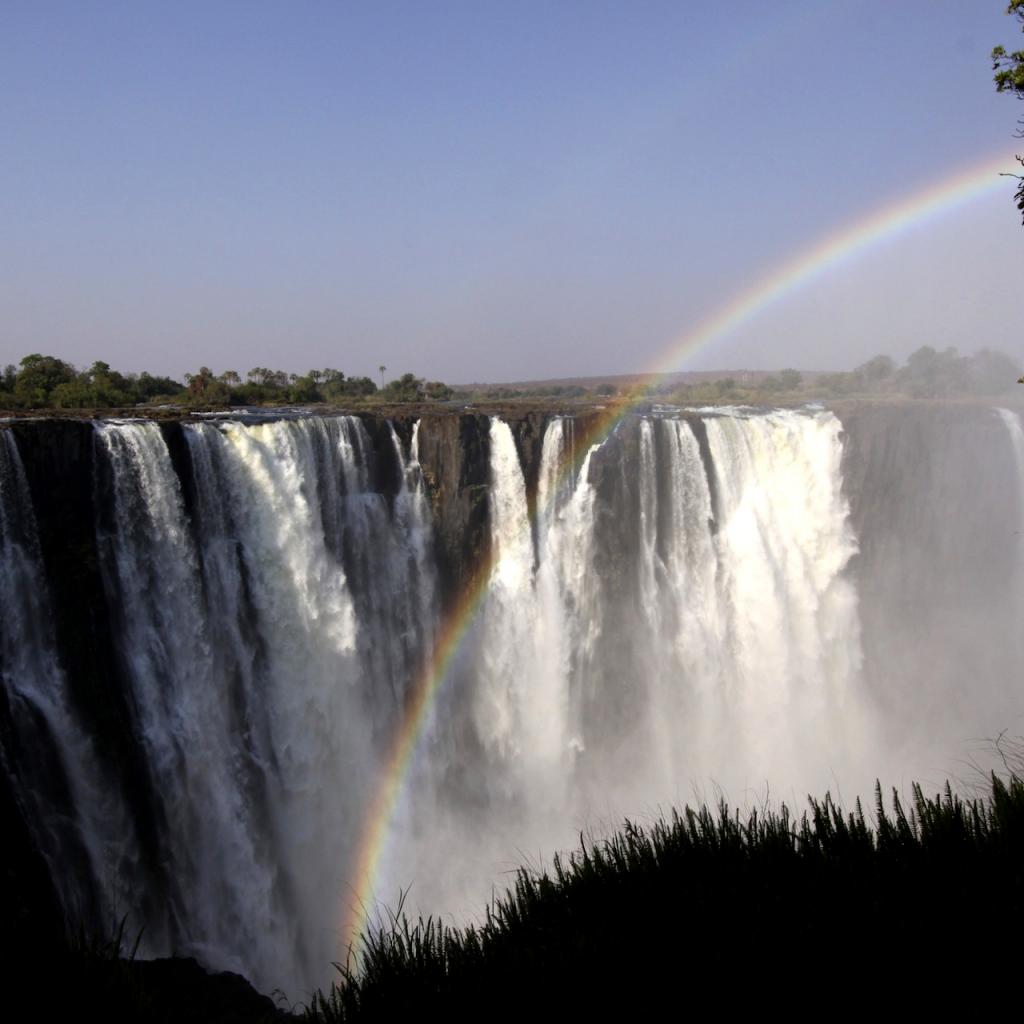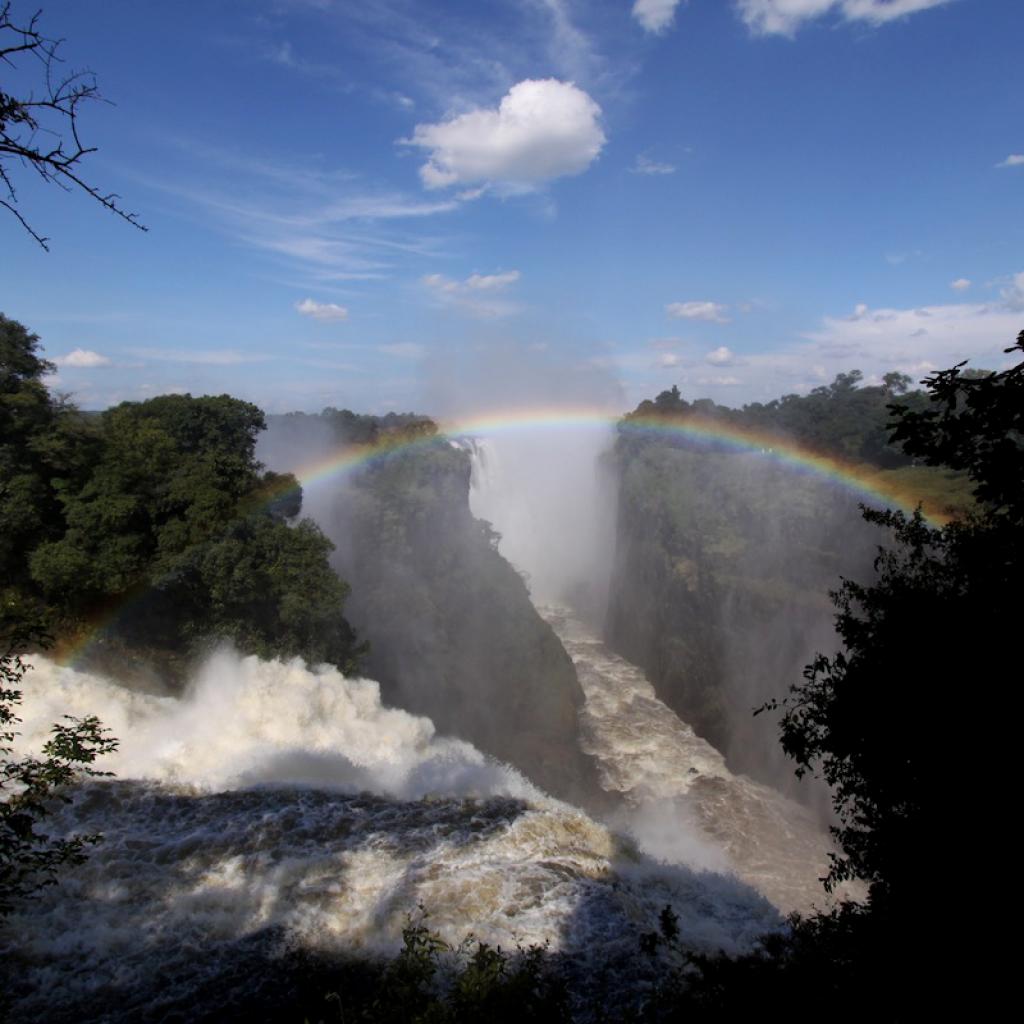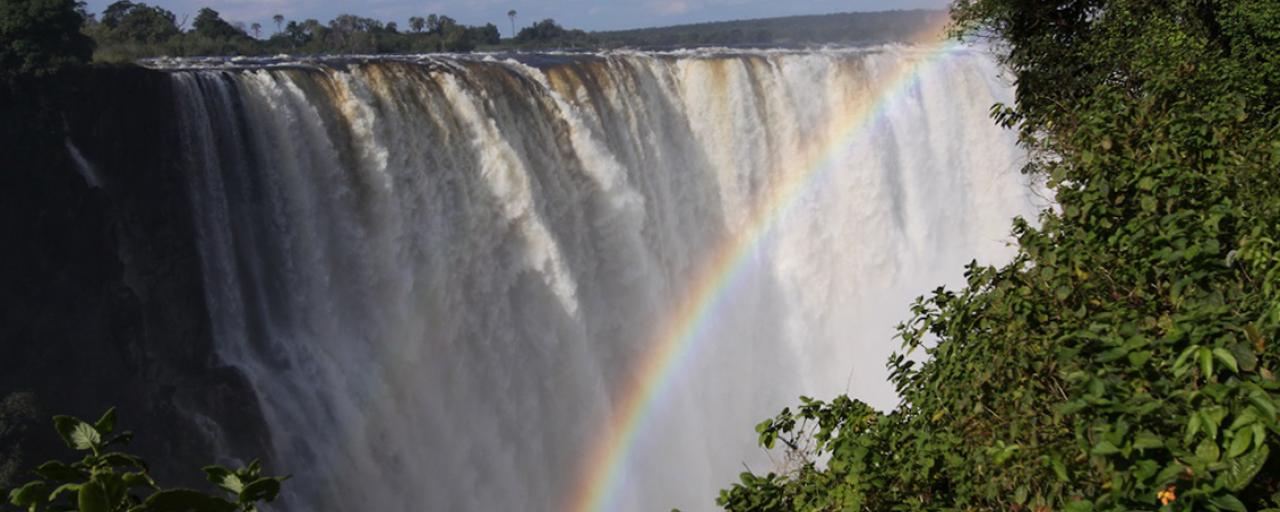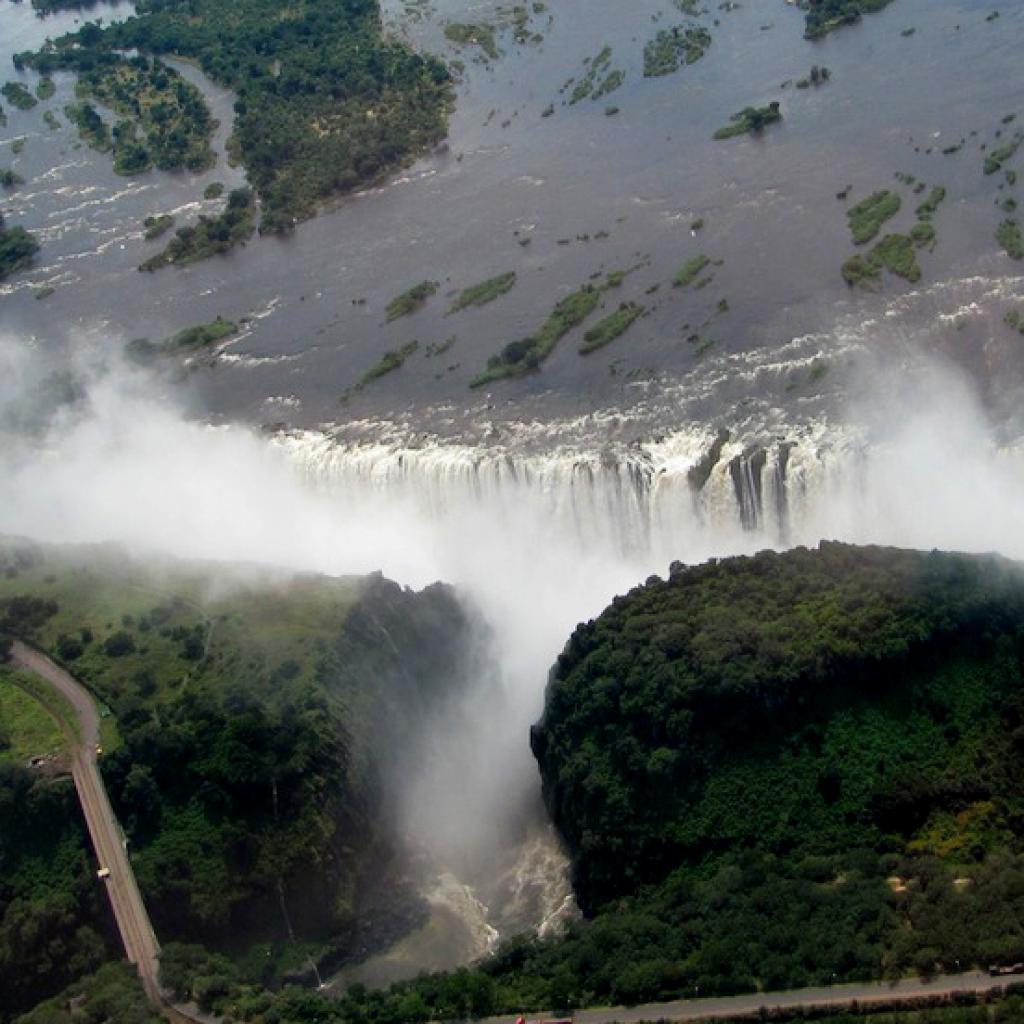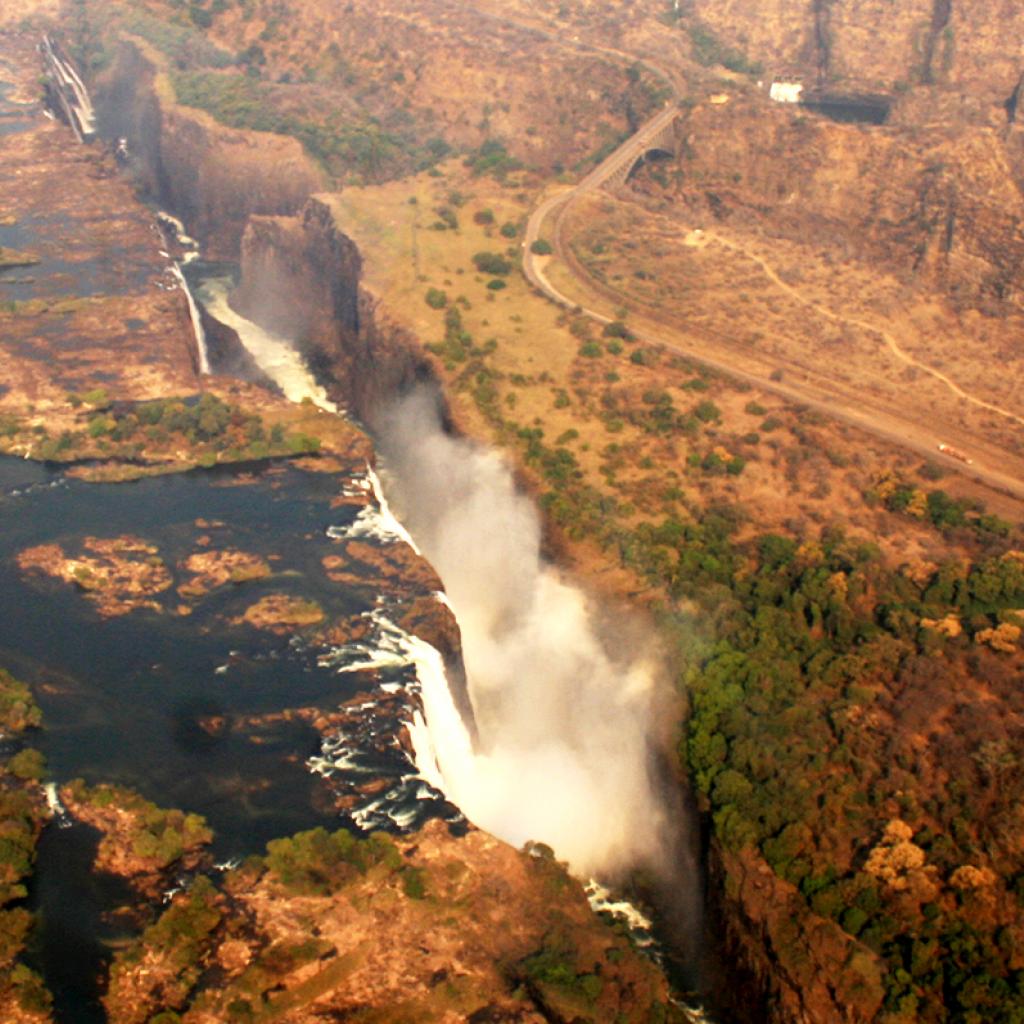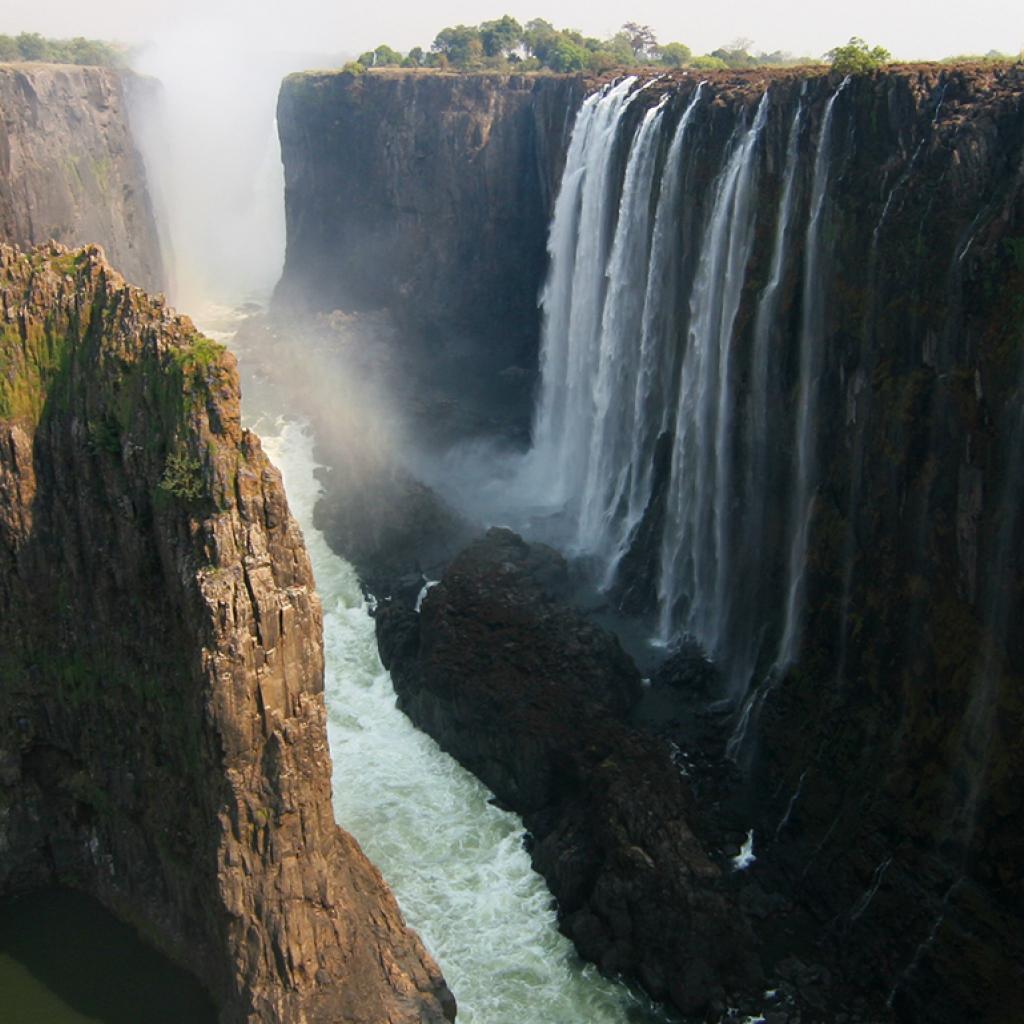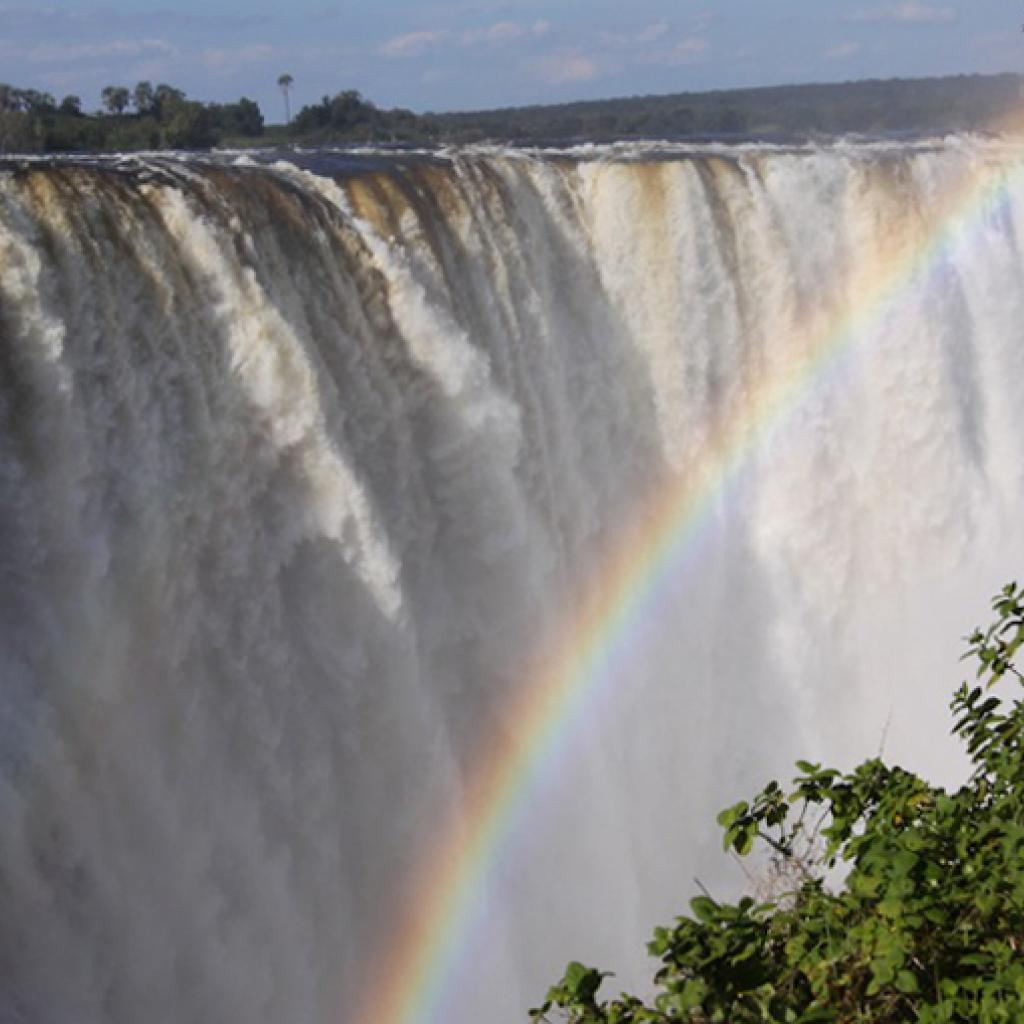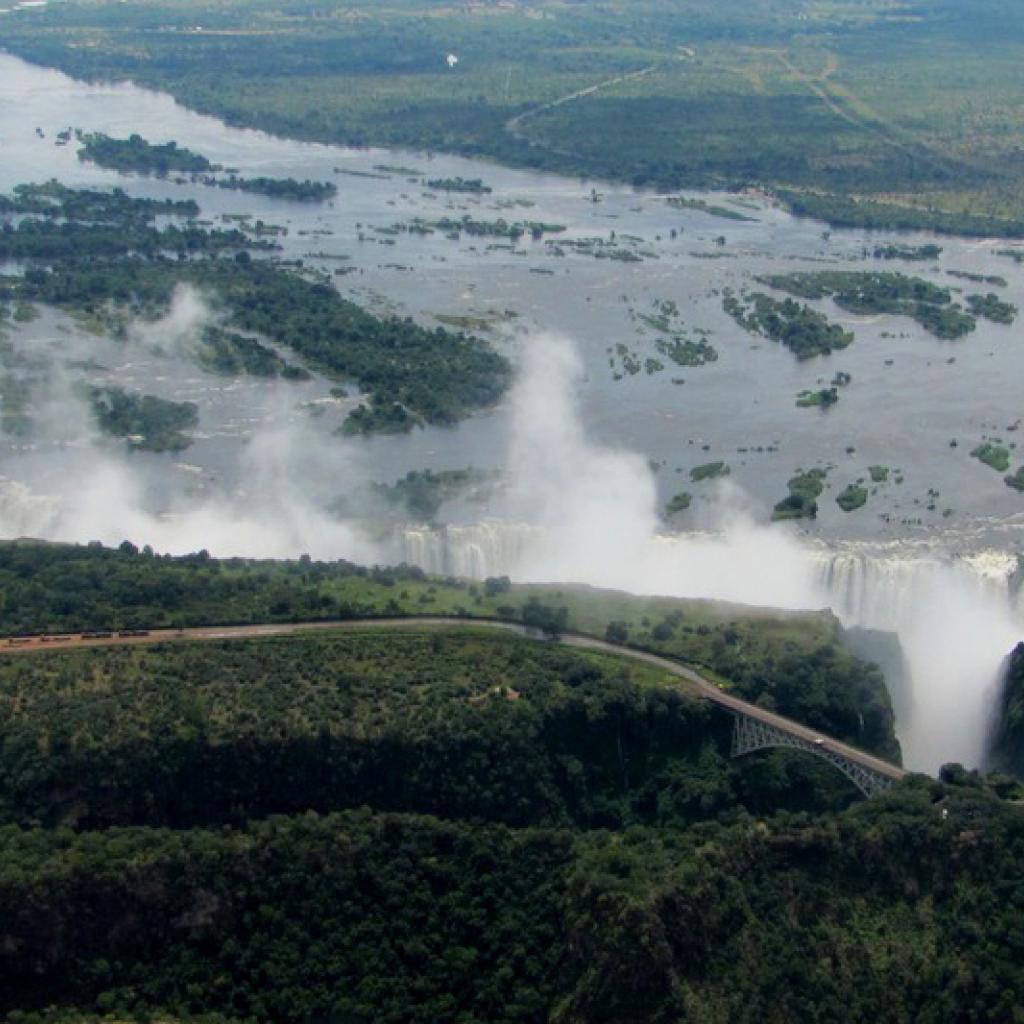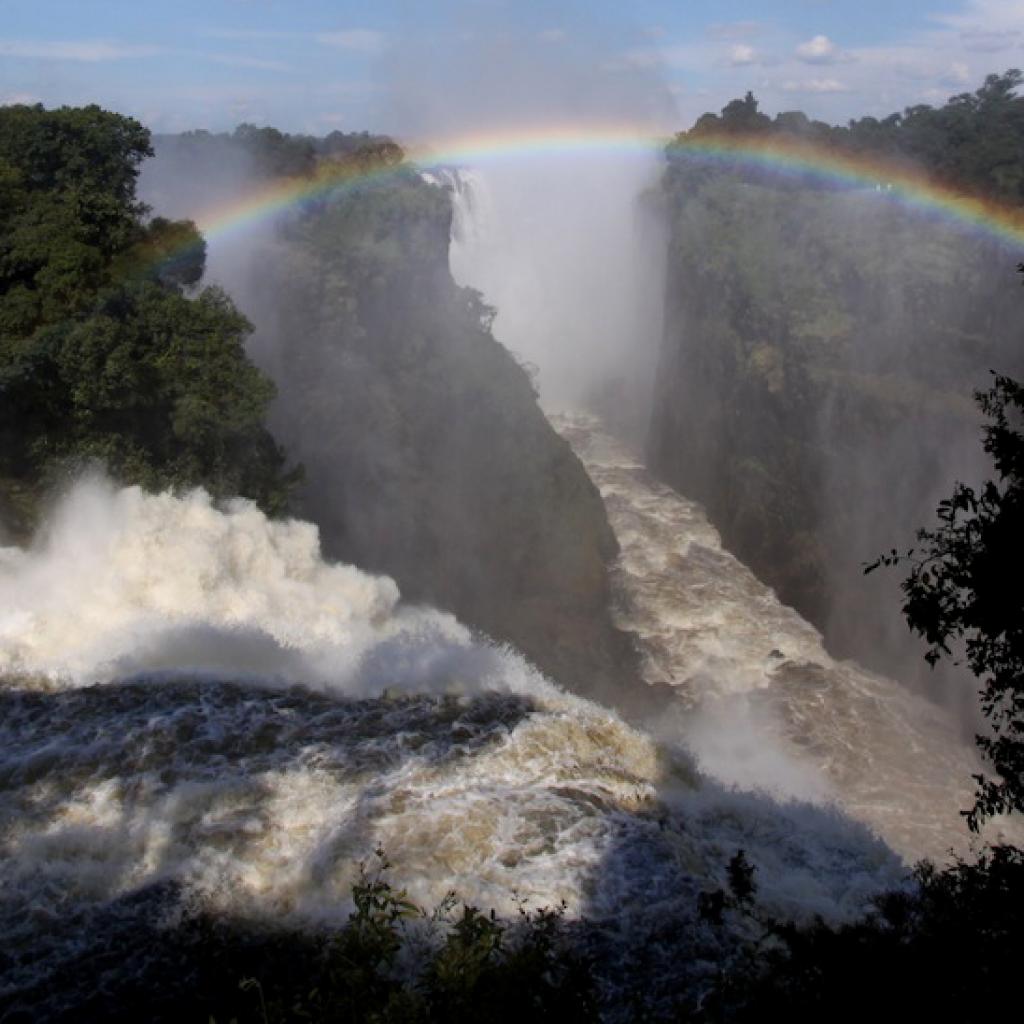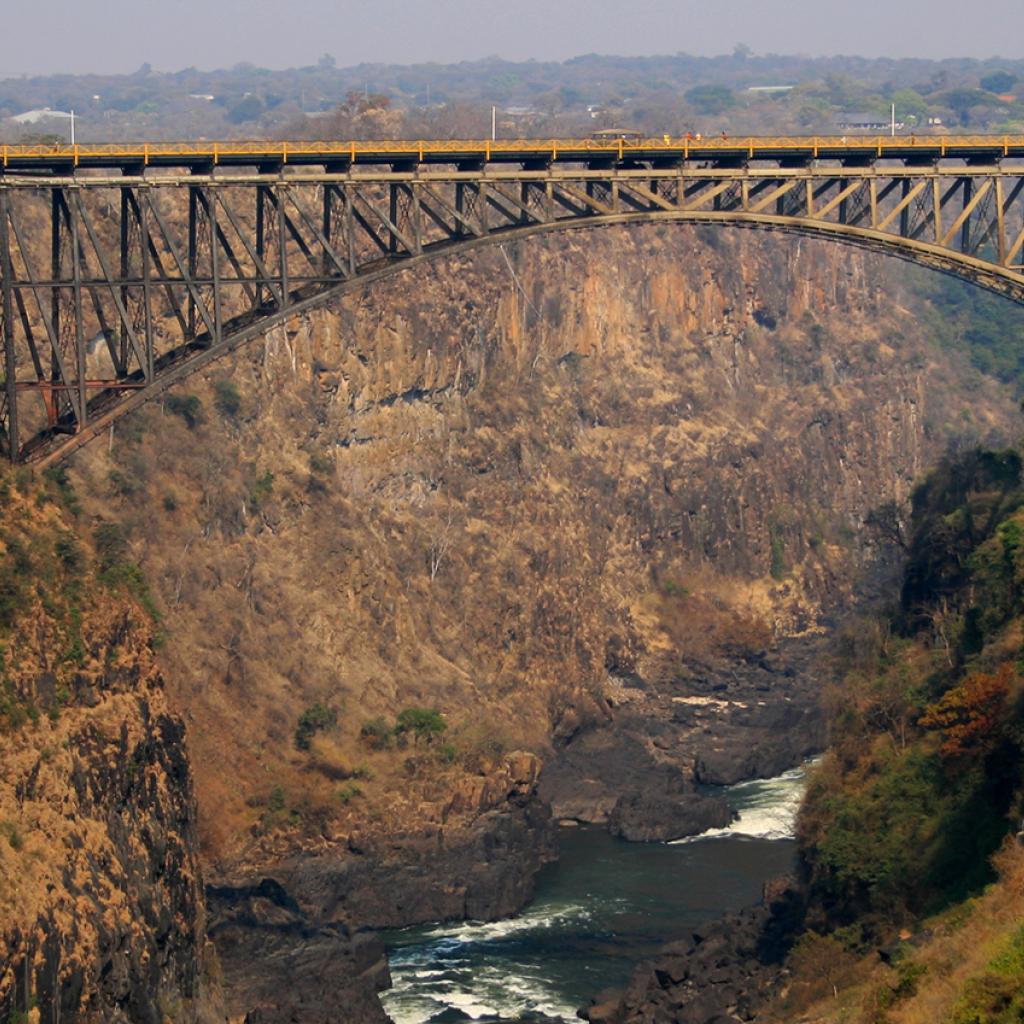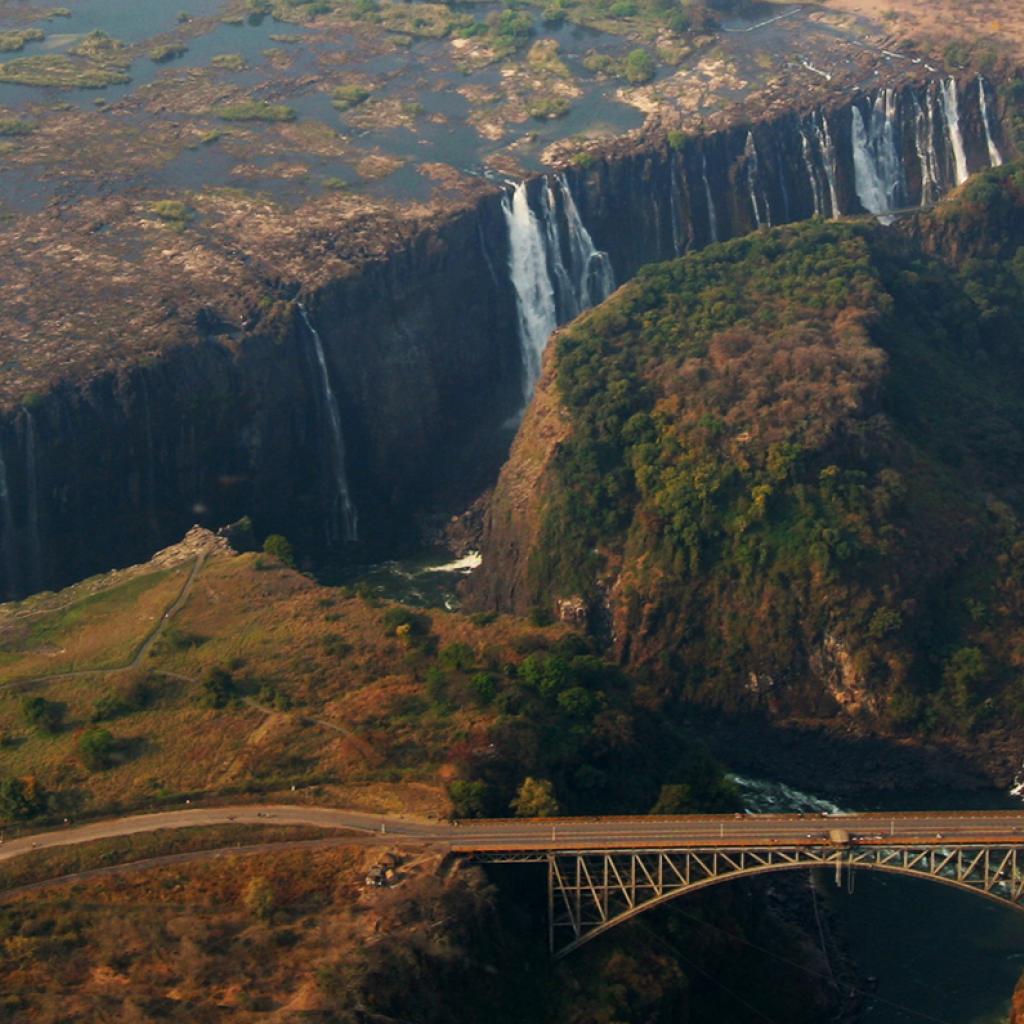The Victoria Falls National Park is located in Zimbabwe and, in addition to the spectacular waterfalls, it also includes an area of 23.40 sq. Km extending along the Zambezi River, 6 km upstream and 12 km downstream of the falls, along the basaltic gorges where the Zambezi river runs impetuously.
The park contains a rain forest that survives through the Victoria Falls and the splashes of water that rise up to 400 meters above the falls and fall back into this area; the rainforest could not live otherwise.
In the forest there are several species of ferns, climbing plants, vines, figs and palms, such as the wild date palm or Senegal date palm and the palm producing vegetable ivory, there are also trees present as well in the rest of the region such as mahogany and ebony trees; many species of birds live here and can only be found here thanks to the current vegetation.
Near the falls there is a 20-meter-high millenary baobab with a diameter of 16 meters; this is one of the largest baobabs in the world.
In the park you can walk the path that is on the side and in front of the waterfalls and above the first gorge, from here you can reach several observation points that give breathtaking views of the Victoria Falls; you can also take a photo safari to admire the different species of animals that live in the park and the nearby Victoria Falls Private Reserve, where you can also see the white rhinos.
Along with the Zambezi National Park, from which it is separate by the town of Victoria Falls, the Victoria Falls National Park covers an area of 560 sq. Km.; within them you can see lions, leopards, buffalos, elephants, various species of antelopes, small mammals and many species of birds.
Photogallery
